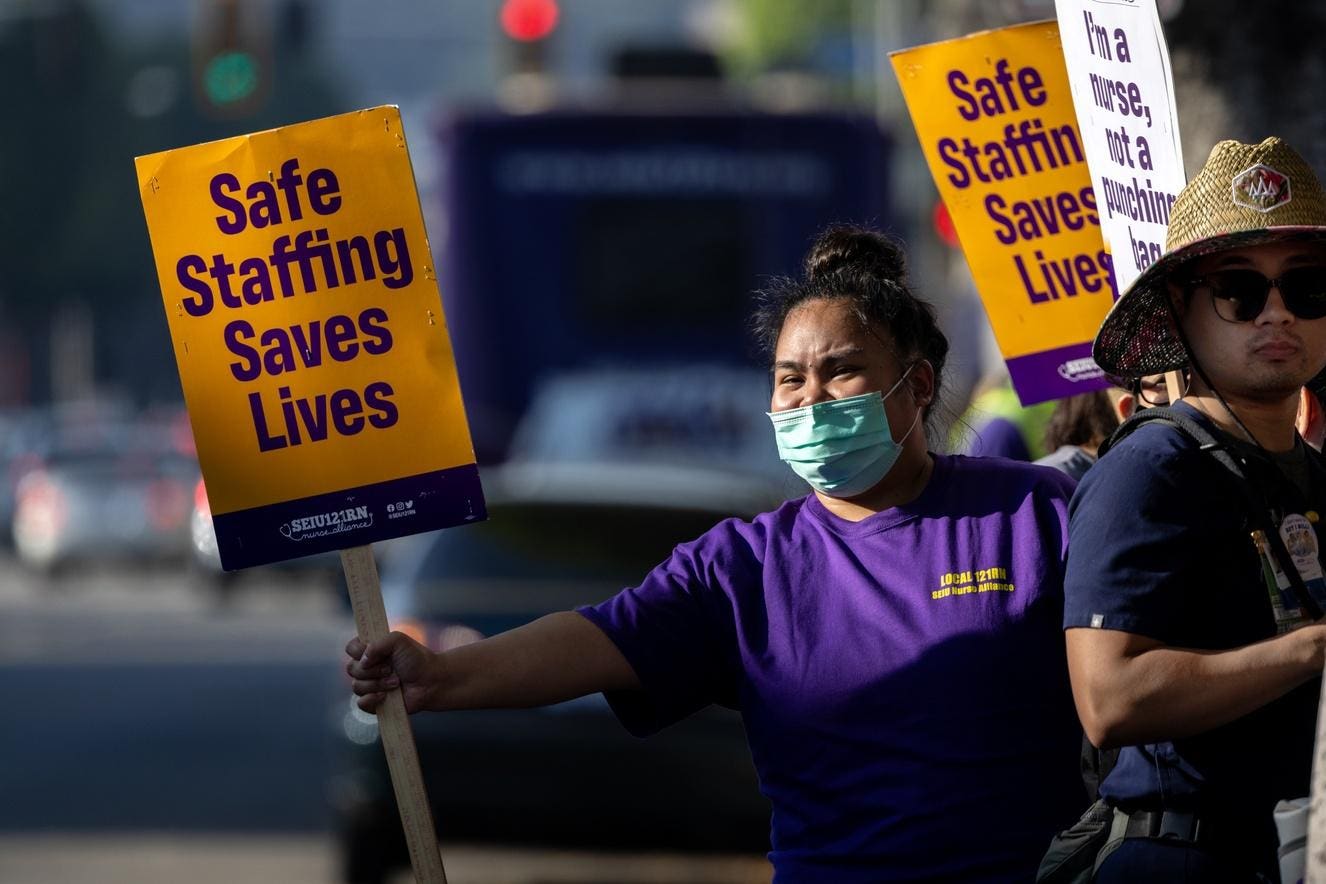Staffing shortages continue to plague the healthcare industry, creating a vicious cycle where overworked healthcare professionals question their ability to continue. A recent report showed that 81% of clinicians want states to implement laws governing staff-to-patient ratios, which they ranked as one of the biggest considerations when taking a job. As more professionals leave hospitals, consumers find their access to quality care threatened. The National Center for Health Workforce estimates that 83 million Americans already live in an area without a primary care provider. Looking ahead, the outlook isn’t brighter, with the U.S. expected to be nearly 200,000 nurses short by 2031.
Staffing shortages undermine doctors’ and nurses’ ability to do their jobs. All too often, their patients also pay the price. A new study found that a 10% increase in nurses’ intention to quit their jobs is linked to a 14% increase in patient mortality. Nobody benefits from an understaffed hospital or one where existing staff are looking for the exits.
Unfortunately, staff shortages in healthcare aren’t new. For years, the industry has tried to solve staffing issues with band-aid solutions, rather than address underlying problems rooted in the business model. Nearly two decades ago, I discussed in my book Employee Retention: Solving the Healthcare Crisis how the healthcare industry needed to rebuild its infrastructure to address staffing shortages before the situation worsened. The industry wasn’t open to building needed infrastructure then, and now it has another predictable crisis, this time amid even tighter budgets.
While technology has advanced over the last two decades and more services are being delivered outside of the acute care setting, the issues related to staffing haven’t gone away, they’ve just multiplied. Today, healthcare professionals are in short supply in part because the industry has failed to change the business model associated with increased burnout. With other options available then and now, the current wave of staffing shortages should come as no surprise. Hospitals are facing a host of financial squeezes that have pushed them to cut staff and tighten operations putting patient safety at risk. Aggregating into systems, the response many took in the face of the Affordable Care Act as a mechanism to find safety in numbers, hasn’t been adequate, and won’t be going forward. Coupled with flat or deteriorating margins and a shrinking workforce, healthcare delivery organizations need to embrace a different business model—one that ties payment to outcomes that matter across the continuum of care and that redesigns the roles of critical staff to engage them differently across the patient/consumer journey.
As I laid out in Employee Retention, a systematic approach to building needed infrastructure requires fundamentals such as redefined roles, accountability for results, change in core processes, readily available supplies and equipment, and multiple patient care delivery models. Getting there won’t be easy, but it is vital for the success of the healthcare industry.
Historically, the management infrastructure in healthcare has been optimized for performing operational tasks, not meeting strategic business challenges. My most recent book, Bringing Value to Healthcare, describes how managers have typically been promoted based on technical skills and their ability to execute within existing structures. This has perpetuated adherence to a broken model as health systems remain determined to make the old ways work. Instead, these organizations must invest in leadership with the competencies to conceptualize a new path forward and develop and execute strategies that ensure long-term growth and success.
Implementing strategies that tie payment to outcomes across the care continuum will provide greater financial stability and pave the way to address root causes of staffing shortages. Redefining management roles and associated infrastructure will help mitigate issues leading to turnover including stress and burnout. Unless addressed, these issues will only worsen along with deteriorating balance sheets as an aging population demands more clinical support at the same time nurses and other healthcare professionals are retiring at greater rates than they are entering the field. These factors have brought the industry to a critical juncture.
While health systems have generally adopted band-aid fixes, these recurring systemic problems require strategic solutions and the recognition that staffing shortages are symptomatic of deeper issues.
Fixing healthcare’s chronic staffing shortage is a formidable challenge, but it can be done. The commercial strategy for tomorrow’s healthcare requires a shift in thinking from cutting costs to seeking growth by doing business differently. This means more efficient use of resources and improvement in core processes. Eliminating non-value-added work and removing bureaucratic obstacles that heighten stress will create an environment that is more attractive to healthcare professionals committed to making a difference.
Health systems will find that prioritizing their staff and patients by redesigning their infrastructure in a way that lowers staff-to-patient ratios and addresses healthcare workers’ workload concerns will boost their competitiveness and profitability. Putting in the work to change core infrastructure is never as easy as maintaining the status quo, but it’s abundantly clear that the status quo isn’t serving staff or patients. Changing the business model at its foundation is the only way to cure an ailing healthcare industry.
Read the full article here





